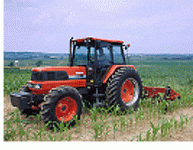Mrwurm
Veteran Member
- Joined
- Jan 20, 2002
- Messages
- 1,561
- Location
- South East Michigan
- Tractor
- New Holland TC30 Hydro 4x4, Gravely Zero Turn Mower
Origins of the \'Compact Tractor\'
Just sitting around and wondering.....
The earliest tractors that I know of that were considered 'compact utility tractors' by the manufacturer was the John Deere 50 series. You know 650,750, 850, 950, 1050. Any thoughts from those of you as to "who" (which company) invented the 'compact' and when did it all start. I recently learned that Kubota does not make any 'BIG' farm type tractors. Did kubota start this compact 'CRAZE'??
Jerry
Just sitting around and wondering.....
The earliest tractors that I know of that were considered 'compact utility tractors' by the manufacturer was the John Deere 50 series. You know 650,750, 850, 950, 1050. Any thoughts from those of you as to "who" (which company) invented the 'compact' and when did it all start. I recently learned that Kubota does not make any 'BIG' farm type tractors. Did kubota start this compact 'CRAZE'??
Jerry
